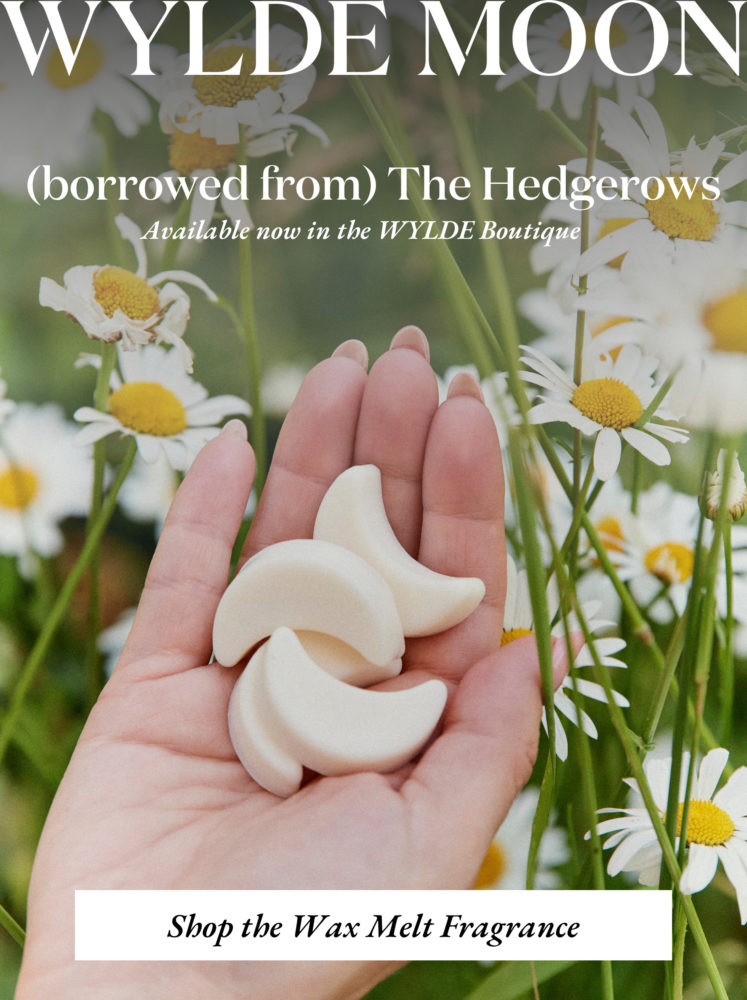5 Minute Read
Words by Kate Lucey

It’s free, it takes under a minute, and is proven to significantly improve your mental wellbeing. Sign us up!
We’re all familiar with the concept of ‘triggers’ (something that resurfaces a painful memory), but their much more positive counterpart, ‘glimmers’, are often under the radar. Glimmers are those small, fleeting moments that ignite joy or serenity, subtly guiding our nervous systems towards feelings of safety and calmness.
Why do glimmers matter?
While they might sound small or trivial, this shift in mindset has the potential to significantly enhance our mental wellbeing. We’re constantly overstimulated, over-communicated with and honestly, a bit overwhelmed, but paying attention to, and connecting with, glimmers could be the answer to soothing and regulating our nervous systems.
Our nervous systems are where all of our bodily responses are generated, so making the effort to soothe them really is worth it. Life is constant change, and accepting the fact that both joy and pain can coexist can help us navigate our journeys.
What are some examples of glimmers?
Glimmers can be as small and brief as walking past a cute dog, hearing a song you like playing in the supermarket, or having the first taste of a delicious cup of tea. A glimmer could be hearing the voice of someone you love, seeing a child playing and laughing, or smelling freshly-cut grass.
In the same way that triggers are different for everyone, so are glimmers. You might not have a response to seeing children, but find joy in a cat brushing up against your leg. You might not care for the smell of fresh coffee, but appreciate the moment when warm sunlight hits your arm as you’re driving. A glimmer is anything that makes you feel joy, and the clue really is in the name; a glimmer is a faint hint of a positive feeling, which translates perfectly to the passing joy of seeing a puppy bounce past you, or the feeling of a soft pillow.

How can I experience more glimmers?
You’ve probably read a lot of advice about being ‘mindful’ and ‘in the moment’ to better your mental health, and this advice is no different. Experiencing glimmers is about paying attention to your surroundings and being aware of what’s happening to you right now, rather than busying your mind worrying about if your lunch was unhealthy, what to buy your friend for their birthday present or how you’re going to have that difficult conversation at work.
If you struggle with this, a good trick I learnt when writing my book about mental health is “The 5,4,3,2,1 technique”, where you take a moment and try and count off five things you can see, four things you can feel (the floor underneath you, clothes or weather on your skin etc), three things you can hear, two things you can smell, and one thing you can taste. Even if you forget which sense should apply to which number (which I do every single time I try to do this), it still works as a way to bring you into the moment.
“the key is taking a moment to be aware of your surroundings”
Now, one of those things you’ve noticed should hopefully be a glimmer. If not, can you look a bit further out of you or change something about your present situation to bring yourself one? Even if it’s a cool glass of water, a song in the background, or changing the way you’re sat or stood.
Deb Dana, a clinician specialising in the nervous system, advises to set a ‘glimmer intention’ for the day, for example, to say that you’re going to aim to spot one glimmer before lunchtime. Glimmers can both be predictable and unpredictable. For example, if you know that your pet brings you joy, or nature, taking them for a walk in the park or stepping outside or just going to say hi to your animal is very likely to bring you some glimmers. But glimmers can also pop up unexpectedly – the key is taking a moment to be aware of your surroundings and situation to see if you can spot any.

How can I use glimmers to improve my mental health?
Simply taking the time to acknowledge that you’ve experienced a glimmer and that it’s made you feel slightly more calm, soothed, or joyful, can help. Seeing a loved one walk through your front door and noticing that you’ve checked off a glimmer can be more meaningful than you might think; you’re being present and mindful, paying attention to what brings you joy, and appreciating the moment. Well done you.
You could also start to keep a ‘glimmer journal’, whether in your phone or on some beautiful stationery (putting a new pen to a fresh clean page? glimmer!), taking physical note of the small things that brought you a piece of positivity that day. This can be a lot easier than keeping a Gratitude Journal, which although proven to improve our mental health, can seem impossible for those of us who are struggling. A glimmer journal seems far more manageable and realistic, especially if it’s just in your Notes app.

But you don’t have to keep a record, simply looking out for your personal glimmers and taking a second to appreciate them will help soothe your nervous system. Why not try the 5, 4, 3, 2, 1 technique now, and see what you notice?
There’s research to back all this up; 30 years ago behavioural neuroscientist Stephen Porges noted how our nervous systems scan the world around us not only for threats and triggers, but also for safety signals. The way our body scans for signals is called neuroception. This process is managed by our important vagus nerve, which takes care of important body functions and connects our minds with our guts.
The study of how this nerve connects our brain, heart, and organs is called Polyvagal Theory. It explores how this connection affects our emotions and ability to connect with ourselves and others. The name ‘glimmers’ was introduced in Deb Dana’s 2018 book “The Polyvagal Theory in Therapy: Engaging the Rhythm of Regulation.”
Sounds worth giving a try!





